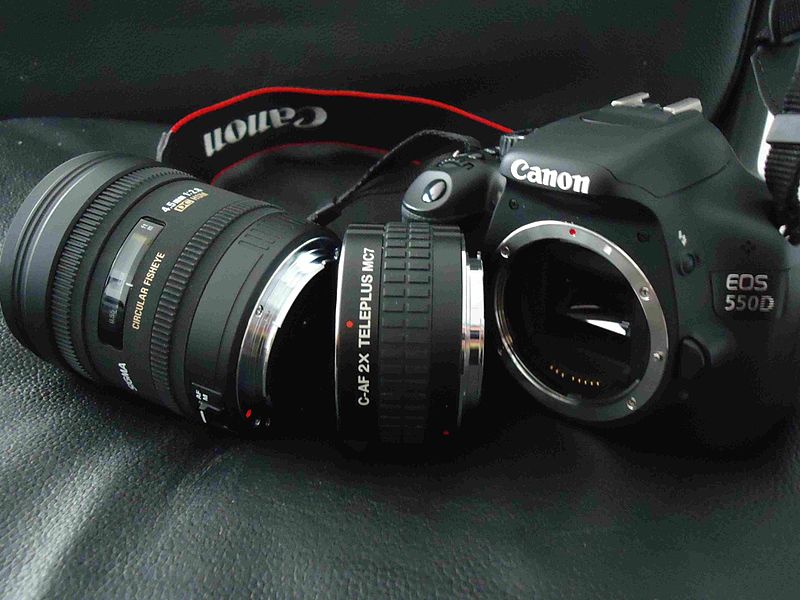
Columbia University Professor & 'Original Multimedia Gangsta' Duy Linh Tu's Video Gear Guide
Posted June 06, 2016
Share To
TweetColumbia University Professor and Video Producer Duy Linh Tu has released a blog on the gear that he uses when he is out in the field producing video.
Each Spring, as sure as my allergies, I get questions from my graduating students about what gear to buy to produce videos in the real world. The truth, I tell them, is that there really is not a bad camera on the market today. Buy what you can afford, but keep in mind two simple rules:
1. Always spend more money on lenses than cameras.
2. Audio is king, so don’t forget the mics.
Also, don’t get too enamored with the latest toys or tech specs. Save your money for traveling and reporting. Going out in the field is the most important thing – not 4K, high dynamic range, or blah blah nerdy tech blah blah.
That said, when my students do push for specific brands, I give them the list of gear I own, use, and trust. Luckily for them, I’m cheap. I use equipment with the most pro results, but with the lowest price tags. There is no bleeding-edge tech on this list, just devices that are reliable and help me make great video.
Video Camera: Canon C100 Mark I (Yes, the old version!). I’ve taken my C100 around the globe and have filmed over a thousand hours of footage without any problems. BUT WHAT ABOUT 4K?!?! I have no idea. Not a single client has ever asked me for anything but HD. WHAT ABOUT THE SONY FS5 or FS7!?!? They’re great cameras! But I like Canon colors better, and I like not buying another camera even more.
For audio, I pair the C100 with the Rode NTG-3 shotgun mic. If this mic is too pricey, a cheaper, high-quality alternative is the Rode NTG-2. You should NEVER EVER EVER EVER use the on-board camera mic.
Hybrid Video/Stills Camera: Canon 80D. This is a DSLR that can truly operate like a video camera. I has a swivel screen, a microphone jack, and (most importantly) a headphone port to monitor audio. It’s not perfect, but it is a great alternative if you can’t afford the C100. Nope, no super slow motion or 4K on this camera, but the pictures are great and the video is beautiful. WHAT ABOUT PANASONIC AND FUJI?!?! I love Panny and Fuji gear, too! But I have Canon lenses and they just work with Canon cameras.
One note: you’re going to need an external shotgun mic. The built-in mics on the 80D are garbage. Get the Rode Videomic Pro, a small, reliable solution.
Poor Man’s Hybrid Video/Stills Camera: Canon EOS M3. No, I don’t get paid by Canon! I just love this camera because it’s small and shoots great stills and video. It’s great for anyone working anywhere where a big ol’ DSLR might attract too much unwanted attention. The lenses are also tiny, so you get great focal range without carrying around monstrous lenses.
All-Around Lens: Canon 24-105mm F/4L. Yes, this is pricey for anyone on a budget. BUT, mine stays on my C100 (and my 5D Mark 2 and Mark 3 before that) at least 98% of the time. It’s reliable and makes great images. After a few gigs, it pays for itself. If this is too rich for your blood, try the Canon 18-135mm.
Lav Mics: Sony ECM-77B (wired) and Sennheiser G3 (wireless). For most interview situations, I prefer to use my wired lav mic (no interference or changing batteries to worry about). For more mobility, I pull out the wireless mics. If you can, get both for your kit. But, for the love of all that is good, get a lav mic for interviews!!!
Note: for the wired mic, you’ll need an XLR cable.
Monopod: Manfrotto. Shooting styles are very subjective. Some shooters like shoulder rigs, others like tripods. I like the stability and mobility of a monopod. At least 95% of my footage is shot with this model.
Tripod: Manfrotto. There are tons of great tripod manufacturers, but this one works flawlessly with all the cameras I’ve listed above. If you want to get a cheaper tripod that is little bit less smooth in panning and tilting, get the Benro S2.
Shop around. I get most of my gear from B&H, but there are many other online retailers that offer great discounts. Also, test equipment before you buy. Tech specs and reviews are valuable, but you should like the feel of the gear in your hands.
What if you buy something other than what I recommended? Great! You’ll be just fine. You have some video equipment! Don’t overthink it. Just grab your gear and go tell stories.
Happy Shooting,
Duy


